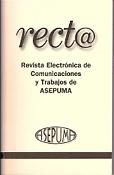Some optimization and decision problems in proportional reinsurance
DOI:
https://doi.org/10.24310/recta.17.1.2016.19924Keywords:
Optimality, Phase-type distribution, ReinsuranceAbstract
Reinsurance is one of the tools that an insurer can use to mitigate the underwriting risk and then to control its solvency. In this paper, we focus on the proportional reinsurance arrangements and we examine several optimization and decision problems of the insurer with respect to the reinsurance strategy. To this end, we use as decision tools not only the probability of ruin but also the random variable deficit at ruin if ruin occurs. The discounted penalty function is employed to calculate as particular cases the probability of ruin and the moments and the distribution function of the deficit at ruin if ruin occurs.
We consider the classical risk theory model assuming a Poisson process and an individual claim amount phase-type distributed, modified with a proportional reinsurance with a retention level that is not constant and depends on the level of the surplus. Depending on whether the initial surplus is below or above a threshold level, the discounted penalty function behaves differently. General expressions for this discounted penalty function are obtained, as well as interesting theoretical results and explicit expressions for phasetype 2 distribution. These results are applied in numerical examples of decision problems based on the probability of ruin and on different risk measures of the deficit at ruin if ruin occurs (the expectation, the Value at Risk and the Tail Value at Risk).
Downloads
Publication Facts
Reviewer profiles N/A
Author statements
Indexed in
-
—
- Academic society
- N/A
- Publisher
- UMA Editorial. Universidad de Málaga
Downloads
Published
How to Cite
Issue
Section
License

This work is licensed under a Creative Commons Attribution-NonCommercial 4.0 International License.









